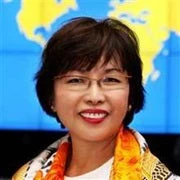 Last week I attended the fall meeting of the board members of the Education for All – Fast Track Initiative (EFA-FTI), hosted by the government of Spain. Present were senior representatives of bilateral aid agencies, UN agencies, civil society organizations, and high-level government officials from Burkina Faso, Mongolia, and Rwanda. In the wake of the recent Millennium Development Goals (MDG) Summit in New York City, the discussions among the members about the future direction of the EFA- FTI partnership—which coalesces critical financial and technical support around country-owned education plans—illustrated that in these times the need for sustained support to education remains greater than ever. Commitment to the principles of education for all is needed from all stakeholders.
Last week I attended the fall meeting of the board members of the Education for All – Fast Track Initiative (EFA-FTI), hosted by the government of Spain. Present were senior representatives of bilateral aid agencies, UN agencies, civil society organizations, and high-level government officials from Burkina Faso, Mongolia, and Rwanda. In the wake of the recent Millennium Development Goals (MDG) Summit in New York City, the discussions among the members about the future direction of the EFA- FTI partnership—which coalesces critical financial and technical support around country-owned education plans—illustrated that in these times the need for sustained support to education remains greater than ever. Commitment to the principles of education for all is needed from all stakeholders.
Today far fewer children in developing countries are out of school than two decades ago. Average primary education enrollment rates have surged above 80 percent while primary completion has risen above 60 percent. However, a number of low-income countries are far from meeting the education-related MDGs of primary education completion and gender parity in education. And, in nearly all countries, educational progress lags for groups disadvantaged due to poverty, gender, disability, or ethnolinguistic background. Moreover, learning indicators have not kept up with the improvements in enrollment numbers. Judging by the disappointing results of various learning assessments, for too many students, more schooling has not resulted in more learning, resulting in lost opportunities for many youth and in wasted resources from educations systems.
When children learn, nations prosper. The global education agenda must emphasize a commitment to get all children in school as well as to ensure that they are acquiring the knowledge and skills necessary to lead better lives. To support these goals, the World Bank announced a pledge to increase IDA resources for basic education by an additional $750 million, with a focus on those countries furthest from reaching the goals of universal primary completion and gender parity in education by 2015. Going by the education data that are available from the UNESCO Institute of Statistics, 36 countries are predicted to be seriously off-track with respect to primary completion rates and an additional seven countries are off-track with respect to the gender parity goal. Another 20 low-income countries do not have sufficient data for the projections and many of them are quite likely to be far from meeting the goals as well.
What will the world look like in 2020? Today we are preparing children for future challenges of an increasingly global nature that we cannot yet foresee. Foundational skills of literacy and numeracy will be a must, then as they are now. At the same time, researchers who have attempted to predict the world of work in the future argue that skills such as critical thinking, problem solving, teamwork and communication skills that allow for collaboration will be in higher demand because future jobs will require more non-routine and analytical skills (Murnane and Levy). New frontiers will require us to look both inside and beyond the classroom to achieve these capabilities.
Does the global education agenda in the developing world require the commitment of more resources to learning opportunities? Yes, it does. The youth population (ages 0-14) in the developing countries will be growing to 1.7 billion by 2020. But it’s important also to recognize that financial resources and the school inputs they buy will not be enough. Know-how in designing an education plan, capacity to implement it, and the political commitment to achieve these goals are essential elements for educational progress. The focus on helping countries understand what makes an entire education system run effectively, and how to drive results, is a key component of the World Bank’s emerging Education Strategy 2020. This new strategy is turning its focus to strengthening education systems that can deliver more learning.
The draft Education Strategy is now available for review and feedback online, after extensive feedback from stakeholders during our global consultations. You can share your thoughts during this final phase of consultations through our online comment form until November 30, 2010.
Please join us as we chart our direction in education for the next ten years.
Photo credit: This image produced by NASA comes from Wikipedia Commons.


Join the Conversation